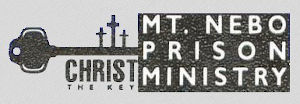Practical Reasons for Retaining the KJV
Practical Reasons for Retaining the KJV
By Joel R. Beeke

Here are twelve practical reasons for retaining the King James Version (KJV) of the Bible.
1. The Standard Text of the English Bible
It is wiser to choose the known over against the unknown. The weaknesses and disadvantages of a particular version of the Bible cannot really be assessed apart from a thorough trial of daily usage over several years. Many who welcomed the New International Version (NIV) with great enthusiasm when it first appeared in 1973 are now prepared to admit its serious weaknesses as a translation.
The KJV is well established in the market-place and in the literature of Christian scholarship. It will continue in production for years to come. Helps and reference works are commonly available. It is not likely that the KJV will fade from view and disappear as have many versions that were expected to supplant it.
Likewise the KJV is widely studied and commented on in the literature of biblical scholarship. It will always be a standard of reference and comparison for Bible commentators. All other versions are compared to it, contrasted with it, tested by it. Campaigns to sell other versions must attack it, or else claim that a particular new version is just like it. The same cannot be said of any other Bible version.
2. Based on the Full Text of the Hebrew and Greek Originals
Based on the Masoretic Text (Hebrew OT), and the Textus Receptus (Greek NT), the KJV gives the most authentic and fullest available text of the Scriptures, with none of the many omissions and textual rewrites of modern translations such as the Revised Standard Version (RSV) and the NIV.
The reader may suppose that such is not the case with the English Standard Version (ESV) of 2000. However, the publishers plainly state that the ESV “is adapted from the Revised Standard Version of the Bible, copyright Division of Christian Education of the National Council of Churches of Christ in the U.S.A.” Those who remember the RSV can attest that few other versions made greater use of the methods and findings of “Higher Criticism.” A corrupt tree cannot bring forth good fruit.
a. Oldest Does Not Mean Best
The Westcott and Hort arguments that ‘the oldest manuscripts are the most reliable’ and that ‘age carries more weight than volume’ are not necessarily true. It could well be that the two oldest, complete manuscripts were found to be in such unusually excellent condition because they were already recognized as faulty manuscripts in their time and therefore were placed aside and not recopied until worn out as were the reliable manuscripts. This is further supported by numerous existing differences between the Vatican and Sinaitic manuscripts.
b. Volume
The King James Version New Testament is based upon the traditional text, sometimes called the Ecclesiastical or Majority Text. The vast majority of the more than 5,000 known partial and complete Greek manuscripts follow this textual reading.
c. Church History
The received text has been used by the Christian church throughout history. The churches of the Reformation all used Bibles based on the traditional text. For example, the Dutch Statenvertaling, produced by order of the Synod of Dort, is based upon the Ecclesiastical Text.
3. A More Faithful Method of Translation
The KJV translators employed a method of verbal equivalence (‘word for word’) rather than the method of paraphrase of dynamic equivalence (‘meaning for meaning’) used in the NIV. The result is, the KJV presents what biblical authors wrote, not what a translator or a committee thinks they meant.
4. A More Honest Translation
The text of the KJV uses italics to identify every word or phrase interpolated (supplied by the translator) and not given in the original. Such a practice could not be followed in the NIV, because of its “meaning for meaning” approach.
5. A More Precise Idiom
Often attacked at this very point, the KJV actually is a more accurate and helpful translation precisely because of the archaic pronouns (“thou, thy, thee,” etc.). Both Hebrew and Greek distinguish clearly between the second person singular (“thou”) and the second person plural (“ye, you”). In many statements this makes an important difference (e.g. John 3:7). In a sense it is correct to say that in praying the Lord Jesus used “Thou” – God is one, not many! – for He definitely used the Hebrew or Greek equivalent.
6. The Best Liturgical Version
The KJV excels as a version for public worship. That is why it has been used so widely in the churches. The requirements of the sanctuary are not those of the classroom. Students might read several versions, ancient and modern, but none surpasses the KJV as a liturgical version, that is, adapted to the needs and circumstances of public worship.
7. The Best Format for Preaching
The KJV traditionally has been laid out verse by verse on the page, rather than in paragraphs; though for most of the text, paragraphs are indicated by the pilcrow or paragraph mark. The Hebrew and Greek texts, of course, have no paragraphing at all. The verse-by-verse format best serves the purpose of verse-by-verse consecutive expository sermonizing and Bible study.
8. The Most Beautiful Translation
The KJV gives classic expression to many important passages in the Bible (e.g. Ps. 23, Isa. 53, Luke 2, and the Parable of the Prodigal Son). Our seniors need to hear these passages as a comfort and help as they draw near to the end of life’s journey and our children need to hear them in the KJV as part of their nurture and education. The KJV is an important part of the spiritual and cultural heritage of all English-speaking Christians, and a key to our greatest literature. Children well instructed in the KJV will be advantaged over other children, spiritually, linguistically, educationally, and culturally.
9. An Ecumenical Text for Reformed Christians
No other version has been used so widely among English-speaking Christians. The KJV is used by preference in many conservative Reformed congregations. The KJV is also used in the Christian schools these churches sponsor. Using the KJV is one way to underscore our unity and identity with other conservative evangelical and Reformed Christians.
10. A Version that “Sounds” Like the Bible
More than any other version, the KJV sounds like the Word of God, even to unbelievers. The KJV translators aimed at accuracy. They certainly did not impose a “contemporary” style on their translation, as anyone can see who reads the “Epistle Dedicatory,” or the introductory discourse of “The Translators to the Reader,” found in most pulpit editions of the KJV. Even in 1611 the KJV sounded different, ancient, as a voice from the past. This difference of voice commands a reverent hearing, and implies the timeless and eternal character of God’s Word.
11. The Character of the Translators
The fifty men appointed to translate the King James Version were not only well-known scholars, but also sound in the Christian faith. No matter what differences there were among them, they all regarded every word of the Bible as inspired by God, they all affirmed the central doctrinal truths of Scripture. Some modern versions are produced by translators whose qualifications are merely academic, and in some cases, their identity is withheld from the reading public.
12. A Bible for Those Who Walk in the “Old Paths”
Using the KJV is a clear statement that we desire to walk in the “old paths” of God’s Word.
Thus saith the LORD, Stand ye in the ways, and see, and ask for the old paths, where is the good way, and walk therein, and ye shall find rest for your souls.Jeremiah 6:16
In choosing this version we choose to stand with all that is best in the great tradition of historic Christianity.
The penchant for new translations was part of the program of change which has done such harm to many denominations over the past century. This change to new translations was often part of an effort to strip worship services of dignity, reverence, and beauty, in favor of the casual, the contemporary, and the convenient. It also causes a congregation to lose touch with keeping the Word in memory. Memorization of the Scriptures suffers when each generation uses a different translation.




















Leave a Reply
You must be logged in to post a comment.